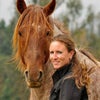On July 17, 2009, an Army MEDEVAC helicopter crew, Dustoff 24, responded to a call for the evacuation of a wounded soldier in the Watapur Valley in northern Afghanistan. A platoon of Army infantrymen had been ambushed and pinned down by well-armed enemy fighters. Several articles were written about the events of that day, which can be read here, here, and here.
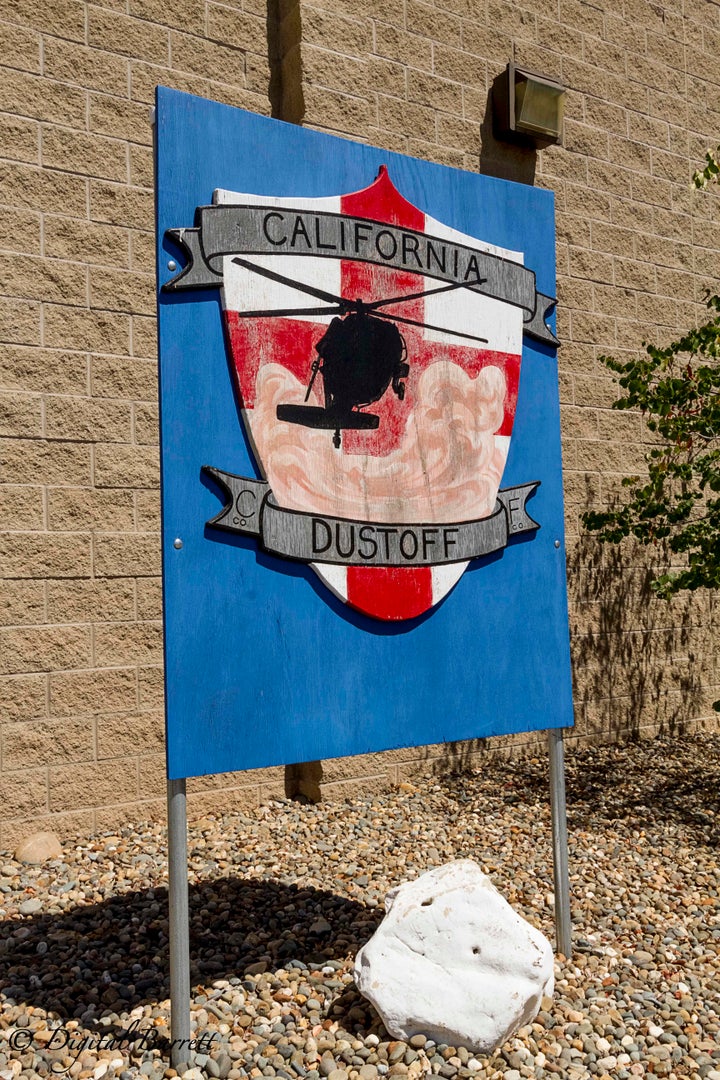
The four-man crew included Chief Warrant Officer 4 Brandon Erdmann and Chief Warrant Officer 2 Scott St. Aubin, who were piloting the UH-60L Black Hawk helicopter, and crew chief Staff Sgt. Thomas Gifford and flight medic Staff Sgt. Emmett Spraktes. The Army honored the crew for their bravery and valor on that day; St. Aubin, Erdmann, and Gifford received the Distinguished Flying Cross with Valor and medic Spraktes received the Silver Star.
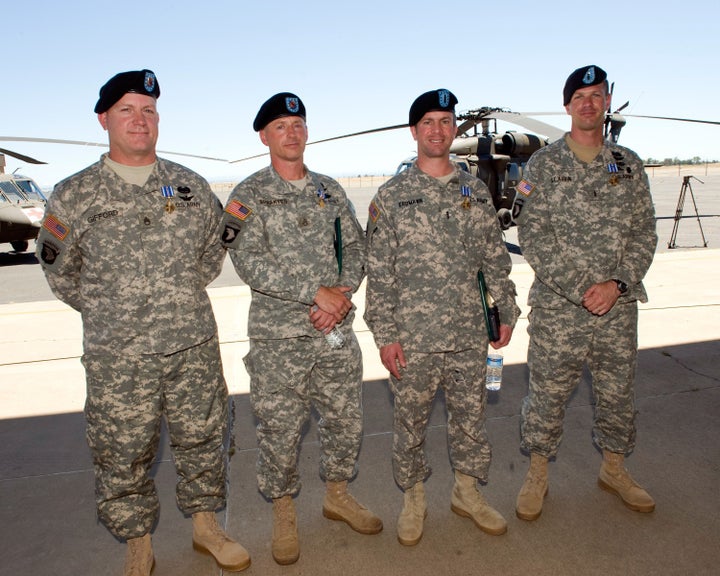
A short video from the medal ceremony: here or watch below
Many men and women in our Armed Forces make choices that save lives, and we honor them for it. But once the events are over, these people go back to their lives. So where are they now?
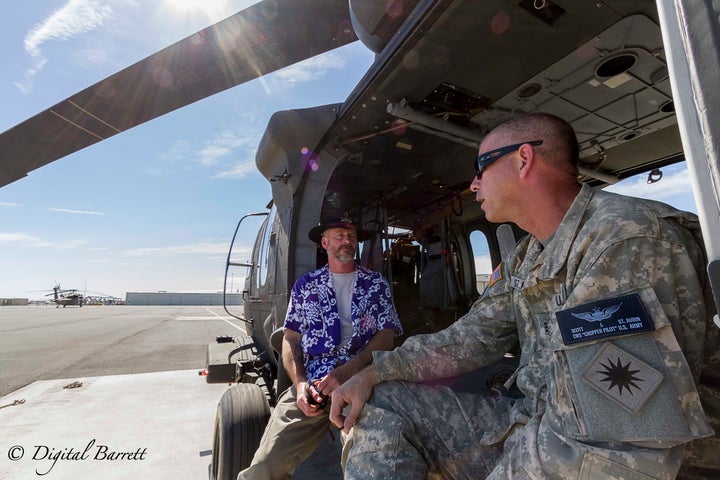
In 2009, Chief Warrant Officer 4 Brandon Erdmann was a Rotary Wing Standardization pilot for C Company, 5 Battalion, 159 Aviation Regiment with the Wyoming National Guard. On the morning of July 17, the Dustoff 24 crew was headed back to Jalalabad after running several missions at the Forward Operating Base in Bostick in northern Afghanistan when they heard over the radio that an infantry platoon needed a MEDEVAC helicopter to pick up wounded soldiers.
“It seemed like an innocuous call at first, so command approved our re-routing,” Erdmann said.
The firefight that followed was unexpected and heavy. There was only one way in and out of the valley, and only one way to get the medic in and the patients out: they had to use the hoist on the side of the helicopter while they hovered over the platoon.
The enemy soldiers had corralled the men up a steep valley, had them surrounded, and were closing in. Several Army gunships were present, attempting to both suppress the gunfire and draw the enemy fire away from the unarmed MEDEVAC helicopter as they came in to lower the medic.
At one point, the crew was preparing to hoist two patients up with severe heat injuries. Erdmann told the medic, Spraktes, to get on the hoist and take the Jungle Penetrator (a special seat made for use with the hoist) up with the patients. The hoist they were using was rated for 600 pounds. Three soldiers, loaded down with their gear was definitely well over 600 pounds.
“I wasn’t sure if the 600-pound limit was a mechanical limit, a safety limit, or an ‘advised limit.’ If I could get all three of them up in one hoist, I wanted to do that,” Erdmann said.
About halfway up the hoist abruptly stopped.
“Turns out the 600-pound limit was mechanical,” Erdmann said. The men had to be lowered back down, allowing the medic to jump off before the two patients could be hoisted again.
In all, the crew went into the valley six times to retrieve five injured soldiers and their medic. Given the amount of gunfire and bullets flying through the air, it was miraculous that Dustoff 24 made it out without being hit one time.
When he thinks back on the event now, the part that stays with Erdmann the most is the trust they were given by their commanding officers.
“We were able to make the decisions we needed to make to execute the missions effectively,” he said. “They trusted us to make the right decisions and that enhanced our ability to be decisive and execute the mission.”
Erdmann is still with the Wyoming National Guard. He is now the Supervisory Instructor Pilot at the Wyoming National Guard’s Army Aviation Support Facility, in charge of managing the other instructor pilots within the state. He also is in his third year as a seminary student. In the fall, he will start his internship with the First United Methodist Church in Cheyenne, Wyoming. He hopes to be appointed as a pastor in 2019.
In 2009, Staff Sgt. Emmett Spraktes was with the California Highway Patrol (CHP) and was a paramedic instructor at the Emergency Medical Services unit at the CHP academy. He also taught basic medical training and tactical medicine to SWAT teams across the state.
In 2008, he had returned from Iraq as a ground medic and was not supposed to be deployed again as there were other medics in line to go. But when the tour for Charlie Company, of the California National Guard’s 1-168th Aviation Regiment (based near Sacramento, California) came up, several medics had been unable to go and Spraktes found himself again preparing to deploy.
When the call came in regarding the ambushed platoon, the crew pretty quickly decided to take the call. But everyone knew Spraktes would have to go outside the helicopter and lowered to the ground during active fire.
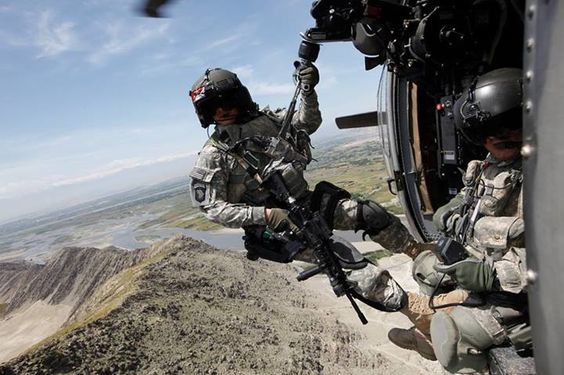
“I had not been that terrified since I was a child,” Spraktes said.
But he got his gear together and prepared to be lowered down to the wounded soldiers. Even though he was terrified, Spraktes said he never hesitated for a moment. He fully expected to get shot, and on his way down, after several bargains with God, he finally just gave in and thought, “Whatever will be, will be.”
He hit the ground and made his way to the platoon.
“When I got there, these boys were all tucked deep in between the rocks, their faces withdrawn. They were waiting to die,” he said. “I didn’t know it at the time, but they had very little ammunition left and no water.”
Spraktes loaded the critical patient into the SKED (a stretcher designed for use with the hoist) and sent him up. After taking him to the hospital in Asadabad just a few minutes away, the MEDEVAC crew returned and withdrew two more soldiers. This was when they were notified of the platoon’s dire situation with ammunition and water. They loaded up as much ammunition and water as they could at Combat Outpost Honaker-Miracle and dropped it to the platoon.
After hoisting out two more soldiers that needed help, Erdmann told Spraktes they were coming back for him. Spraktes didn’t want to leave the platoon. He felt that they were just boys, and they were down five soldiers. But Erdmann insisted that Spraktes was needed in the helicopter to treat the patients they had extracted.
Reluctantly, Spraktes connected himself to the hoist and began ascending. As he left, he looked down at the platoon and was awash in regret and anger. Even in recalling the memory, his eyes well with tears.
“They looked up at me, they needed another soldier. They needed help,” he said. “It’s one of my biggest regrets… that I didn’t stay with them.” Even as they left, reinforcements were already in the works to be delivered to the beleaguered platoon.
When asked what stays with him from this event, Spraktes doesn’t hesitate.
“This event changed how I perceived myself,” he said. “I still don’t see what other people see. I knew the conflict that was going on inside of me. I was so afraid. I know that I am not as tough as I thought I was or as brave as I thought I was. It was a very humbling experience. And yet it’s conflicting because I am so grateful for it and that we were able to be a part of something so much bigger than ourselves.”
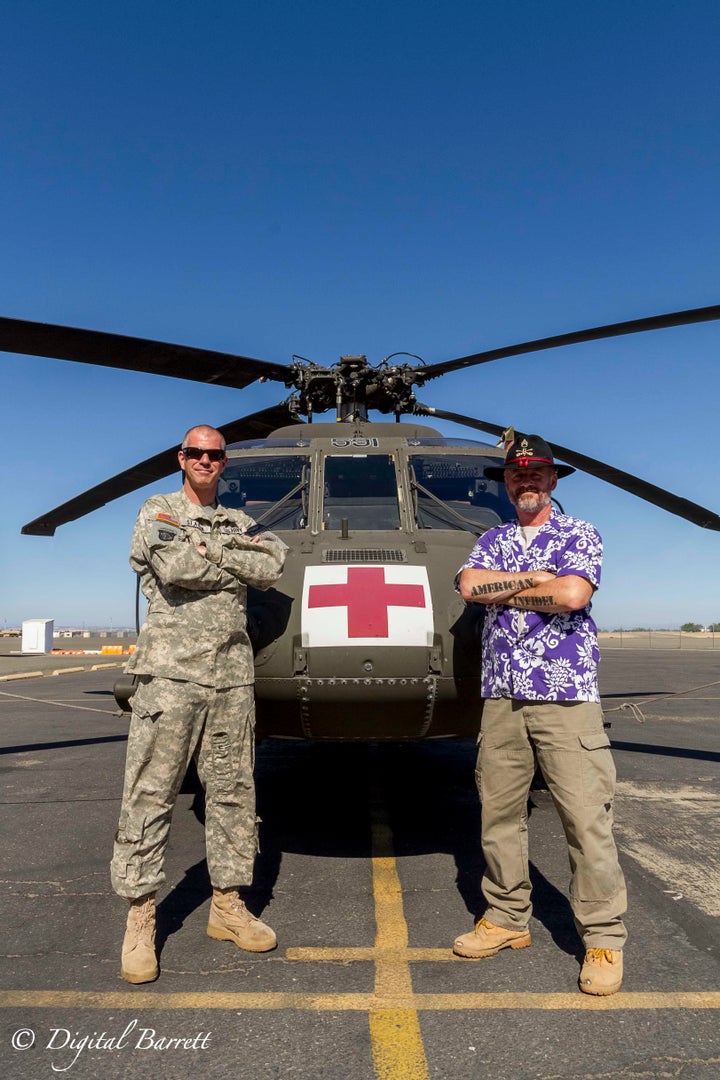
Today Spraktes is retired from the CHP and the California National Guard. He still teaches at the CHP academy and teaches tactical medicine to SWAT teams and other law enforcement. Also, he recently began offering a civilian class on tactical medicine.
In 2009, Chief Warrant Officer 2 Scott St. Aubin was a Probation Officer with Solano County in California and was working on getting his “Pilot in Command” status as a helicopter pilot with the Army National Guard. During his tour in Afghanistan, he had been flying with various other pilots so they could each test him and sign off on his skills. The flight from Bostick to Jalalabad that morning was meant to be his final flight before having to appear before a panel of pilots and Army officials that afternoon for an oral examination.
“When we initially arrived at the scene, we had to wait for things to calm down a little before we could go in and retrieve the critical patient,” St. Aubin said.
Once they were able to hover above the platoon, St. Aubin said there wasn’t much room to maneuver. The valley was steep and narrow, causing the rotor system to come uncomfortably close to the walls of the valley when they hovered to lower and retrieve the soldiers.
Later that afternoon, after returning to Jalalabad, cleaning up, and taking a few breaths, St. Aubin still had to appear before the panel for his final oral examination to receive his status as a Pilot in Command. He entered the room to find it filled with not just the regular panel members, but also several visiting officials and pilots. A few pilots threw some questions at him that he answered.
Then one of the panel members spoke up: “I was one of the pilots supporting you on that mission this morning. That was pretty ballsy. I don’t have any questions for you.”
Turns out, he was one of the pilots of an OH-58D helicopter that was providing cover fire while the Dustoff 24 crew lifted patients out of the valley. No one else could come up with many questions after that, and St. Aubin was certified to be a Pilot in Command.
When asked what impact that event has had on him, St. Aubin said, “That’s a tough question for me. Most soldiers end up asking themselves at some point, do I have what it takes? When things go really badly, would they stay or would they run?”
“On that day, I had that question answered for me. I stayed, and I would do it again. I know now that I do have that ability to stand my ground when it’s important. It’s never been a question for me since.”
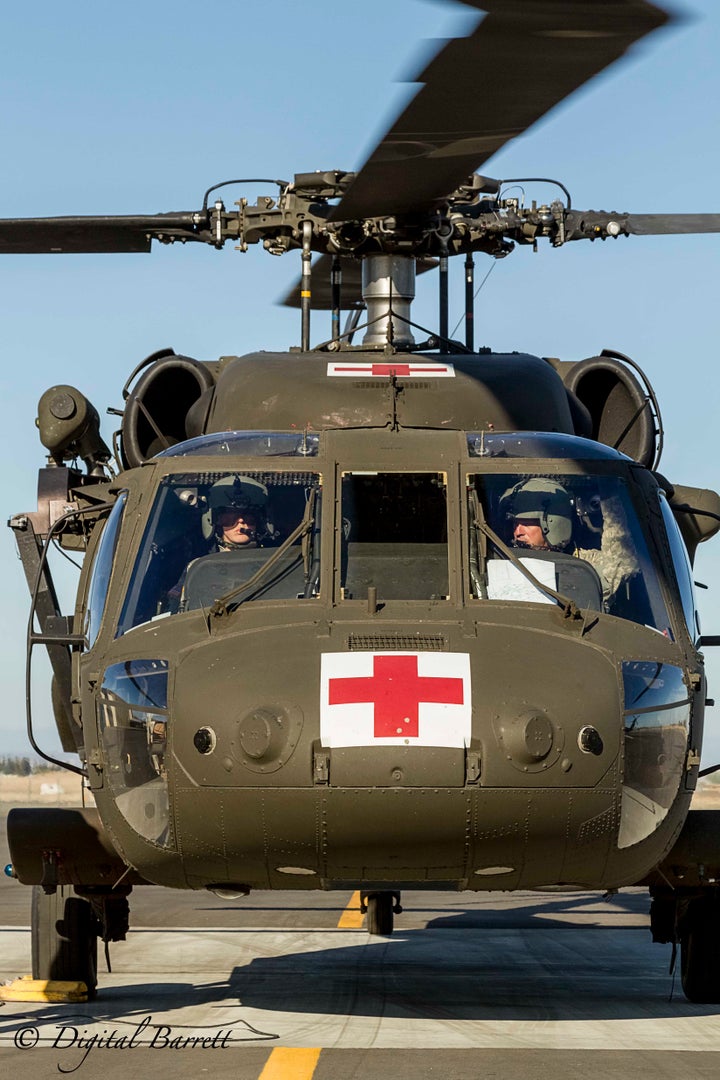
Today St. Aubin is still a Probation Officer with Solano County, and he is now a Chief Warrant Officer 3 and an Instructor Pilot with the California Army National Guard. He flies as often as he can and helps bring along the next set of pilots. During the summer, when the National Guard is activated by Cal Fire to assist with managing wildfires, he and several other California National Guard pilots go up in their helicopters and drop thousands of gallons of water on wildfires, helping the ground crews get a better handle on the flames.
In 2009, Staff Sgt. Thomas Gifford was a Crew Chief with the California Army National Guard (Company C 1-168th Aviation Regiment) based near Sacramento.
As the Crew Chief, Gifford is in charge of everything that happens behind the pilots in the helicopter. The pilots have very limited visibility, and they depend on the Crew Chief to guide them into position. Gifford recalls feeling very vulnerable trying to do their job as MEDEVAC while completely unarmed.
“We carry no weapons (as MEDEVAC), so we have to do our jobs while people are shooting at us, depending on the gunships to keep us safe,” Gifford recalls.
“I think the part that sticks with me the most from that day is having to leave our medic repeatedly. We all understood the urgency of the situation and why it was necessary, but it never sat well with me, leaving him behind.”
Today Gifford is a First Sgt. with the California National Guard and is still based out of Sacramento. He is the Flight Standardization Instructor in charge of training the crew chiefs and medics. In addition to those duties, he routinely flies on Search and Rescue missions and assists when the Guard is activated for natural disasters like fighting wildfires.
Working with the National Guard means you are not a full time “enlisted” serviceman in the military. These men and women have other jobs and perform their Army National Guard duties on the side. When either their state or the federal government activates them, they are sent where they are needed. But when their tours of duty are done, they return to their regular jobs, blending back into society.
